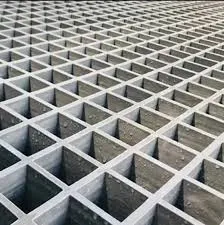
-
 Afrikaans
Afrikaans -
 Albanian
Albanian -
 Amharic
Amharic -
 Arabic
Arabic -
 Armenian
Armenian -
 Azerbaijani
Azerbaijani -
 Basque
Basque -
 Belarusian
Belarusian -
 Bengali
Bengali -
 Bosnian
Bosnian -
 Bulgarian
Bulgarian -
 Catalan
Catalan -
 Cebuano
Cebuano -
 China
China -
 China (Taiwan)
China (Taiwan) -
 Corsican
Corsican -
 Croatian
Croatian -
 Czech
Czech -
 Danish
Danish -
 Dutch
Dutch -
 English
English -
 Esperanto
Esperanto -
 Estonian
Estonian -
 Finnish
Finnish -
 French
French -
 Frisian
Frisian -
 Galician
Galician -
 Georgian
Georgian -
 German
German -
 Greek
Greek -
 Gujarati
Gujarati -
 Haitian Creole
Haitian Creole -
 hausa
hausa -
 hawaiian
hawaiian -
 Hebrew
Hebrew -
 Hindi
Hindi -
 Miao
Miao -
 Hungarian
Hungarian -
 Icelandic
Icelandic -
 igbo
igbo -
 Indonesian
Indonesian -
 irish
irish -
 Italian
Italian -
 Japanese
Japanese -
 Javanese
Javanese -
 Kannada
Kannada -
 kazakh
kazakh -
 Khmer
Khmer -
 Rwandese
Rwandese -
 Korean
Korean -
 Kurdish
Kurdish -
 Kyrgyz
Kyrgyz -
 Lao
Lao -
 Latin
Latin -
 Latvian
Latvian -
 Lithuanian
Lithuanian -
 Luxembourgish
Luxembourgish -
 Macedonian
Macedonian -
 Malgashi
Malgashi -
 Malay
Malay -
 Malayalam
Malayalam -
 Maltese
Maltese -
 Maori
Maori -
 Marathi
Marathi -
 Mongolian
Mongolian -
 Myanmar
Myanmar -
 Nepali
Nepali -
 Norwegian
Norwegian -
 Norwegian
Norwegian -
 Occitan
Occitan -
 Pashto
Pashto -
 Persian
Persian -
 Polish
Polish -
 Portuguese
Portuguese -
 Punjabi
Punjabi -
 Romanian
Romanian -
 Russian
Russian -
 Samoan
Samoan -
 Scottish Gaelic
Scottish Gaelic -
 Serbian
Serbian -
 Sesotho
Sesotho -
 Shona
Shona -
 Sindhi
Sindhi -
 Sinhala
Sinhala -
 Slovak
Slovak -
 Slovenian
Slovenian -
 Somali
Somali -
 Spanish
Spanish -
 Sundanese
Sundanese -
 Swahili
Swahili -
 Swedish
Swedish -
 Tagalog
Tagalog -
 Tajik
Tajik -
 Tamil
Tamil -
 Tatar
Tatar -
 Telugu
Telugu -
 Thai
Thai -
 Turkish
Turkish -
 Turkmen
Turkmen -
 Ukrainian
Ukrainian -
 Urdu
Urdu -
 Uighur
Uighur -
 Uzbek
Uzbek -
 Vietnamese
Vietnamese -
 Welsh
Welsh -
 Bantu
Bantu -
 Yiddish
Yiddish -
 Yoruba
Yoruba -
 Zulu
Zulu
frp chimney proves to be durable and efficient.
The Durability and Efficiency of FRP Chimneys
In the ever-evolving landscape of construction materials, Fiber Reinforced Polymer (FRP) has emerged as a beacon of innovation, particularly in applications requiring durability and efficiency. Among various uses of FRP, its application in chimney construction marks a significant advancement. As industries continue to seek reliable materials that withstand the test of time while offering high performance, FRP chimneys stand out as a solution to both environmental and structural challenges.
The Durability and Efficiency of FRP Chimneys
Moreover, the lightweight nature of FRP contributes significantly to its efficiency. Compared to conventional materials, FRP chimneys are considerably lighter, which simplifies their installation process. The reduced weight minimizes the need for heavy foundations and supports, allowing for easier and faster construction. This efficiency is particularly beneficial in projects that demand tight schedules or in locations where logistics may hinder the use of heavy machinery. Consequently, project timelines can be shortened, leading to substantial cost savings.
frp chimney proves to be durable and efficient.

Additionally, FRP chimneys exhibit excellent thermal insulation properties. The material's ability to resist heat transfer ensures that exhaust temperatures remain stable, preventing damage to the chimney structure and enhancing performance. This thermal stability not only contributes to energy efficiency but also promotes better environmental practices, as industries seek to minimize their carbon footprints.
The flexibility of FRP in design further adds to its appeal. With advancements in manufacturing techniques, FRP can be molded into various shapes and sizes, allowing for the creation of custom designs that meet specific industrial needs. This adaptability makes FRP chimneys suitable for a diverse range of applications—from power plants to chemical processing facilities—effectively catering to the unique requirements of each industry.
Furthermore, the installation of FRP chimneys aligns with current sustainability trends. As industries strive to reduce their environmental impact, utilizing materials that are both durable and energy-efficient is paramount. FRP is often produced with a lower environmental footprint than traditional materials, and its long-lasting properties mean fewer resources are consumed over time for repairs and replacements. These attributes position FRP chimneys as a responsible choice for industries looking to enhance their sustainability initiatives.
In conclusion, FRP chimneys represent a turning point in materials used for industrial applications. Their durability, combined with exceptional efficiency and adaptability, make them an ideal choice for modern construction projects. As industries confront the dual challenges of environmental compliance and structural integrity, the choice of FRP presents a compelling solution. With its myriad benefits, the adoption of FRP chimneys is likely to grow, paving the way for a more sustainable and efficient future in industrial practices. As we advance into a new era of construction, embracing materials like FRP will undoubtedly play a crucial role in meeting both current and future demands.









